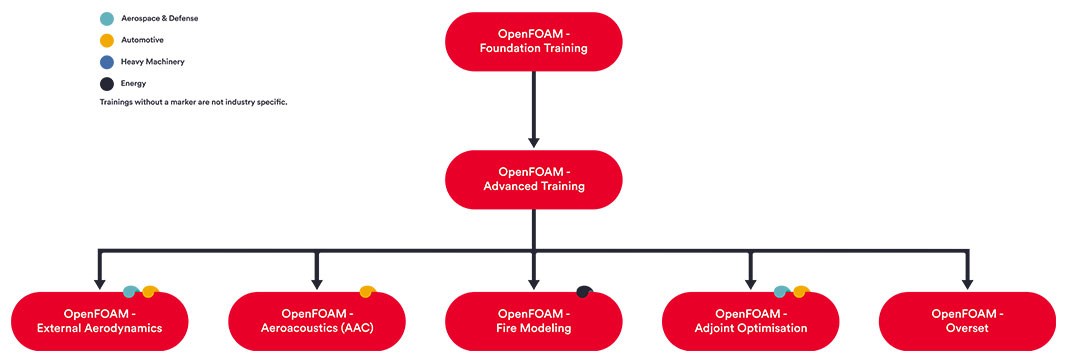OpenFOAM - Aeroacoustics (AAC)
Learn how to use effectively OpenFOAM to Aeroacoustics, Hydroacoustics and Hydro/Aero-Vibroacoustics simulations. Learn industrial best practices. Learn AAC theory and modeling options to improve your simulations accuracy, stability, and robustness.



Audience
CFD Engineers with interest in Aeroacoustics, Hydroacoustics and Hydro/Aero-Vibroacoustics.

Prerequisites


LEARNING PATH



SUGGESTED COURSES

DESCRIPTION
This course covers Theoretical and Applied concepts in Computational Aeroacoustics (CAA) using OpenFOAM, touching on progressive Multiphysics design challenges, e.g. Aero-Vibro-acoustics (AVA). The course organisers are leading experts in flow-noise source prediction, propagation and noise abatement in all engineering sectors including transportation (Automotive, Aerospace, Marine, Rail), energy, power generation, building environment and turbomachinery.
No suitable date or place?
Set up a private training

TRAINING PROGRAM
Day 1
- Basics - aeroacoustics source and propagation mechanisms, including a shallow dive into classical theory
- Narrowband (tonal) and broadband flow noise
- Spatial and Temporal considerations (mesh and time-step)
- Turbulence and wall-modelling
- Steady-state: fast approximations of source mechanisms and ratings
- Surface based (shear-flow correlation)
- Volume based (Lilley-Proudman correlation)
- Transient:
- Appropriate physics modelling and boundary conditions for aeroacoustics
- Numerical control settings in OpenFOAM
- Pure acoustics in OpenFOAM?
- Spectral postprocessing using the built-in OpenFOAM point-based and surface-based temporal-Fourier analysis tools
- Noise Propagation to the far-field using acoustics analogies, e.g. Curle
- General hints and tips
- Insights into coupling with Acoustic propagation codes for acoustics and vibroacoustics using SEA, FEA and BEM